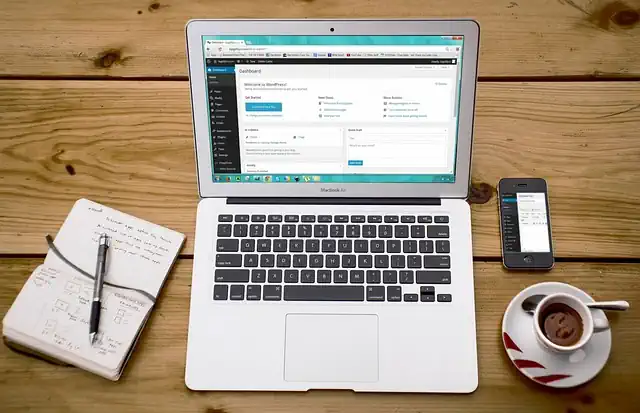How To Save On Your Battery
“Maximize your device’s battery life with these simple tips.”
Introduction
Introduction: Saving on your battery is essential to ensure that your device lasts longer and is always available when you need it. There are several ways to save on your battery, including adjusting your device’s settings, using power-saving modes, and minimizing the use of certain features. By following these tips, you can extend your battery life and avoid the frustration of a dead battery when you need your device the most.
Maximizing Battery Life: Tips and Tricks
Are you tired of constantly having to charge your phone or laptop? Do you find yourself always on the lookout for a power outlet? If so, you’re not alone. Many people struggle with keeping their devices charged throughout the day. However, there are some simple tips and tricks you can use to maximize your battery life and save on your battery.
First and foremost, it’s important to understand how your battery works. Batteries are made up of cells, and each cell has a certain capacity. The more cells your battery has, the longer it will last. However, this also means that larger batteries take longer to charge. So, if you’re in a hurry, it may be better to use a smaller battery that charges quickly.
Another important factor to consider is the temperature. Batteries work best at room temperature, so it’s important to avoid exposing them to extreme heat or cold. This means keeping your device out of direct sunlight and avoiding leaving it in a hot car. On the other hand, if you’re in a cold environment, it’s a good idea to keep your device close to your body to keep it warm.
One of the biggest drains on your battery is the screen. Bright screens use a lot of power, so it’s important to adjust your settings to conserve energy. This means turning down the brightness and setting your device to sleep mode when not in use. You can also set your device to automatically turn off the screen after a certain amount of time.
Another way to save on your battery is to close any apps or programs that you’re not using. Many apps run in the background and use up valuable battery life. By closing them, you can free up resources and extend your battery life. You can also disable any unnecessary features, such as Bluetooth or Wi-Fi, when you’re not using them.
If you’re really looking to save on your battery, you can also invest in a portable charger. These small devices can be charged ahead of time and used to charge your phone or laptop on the go. They’re especially useful if you’re traveling or spending a lot of time away from power outlets.
Finally, it’s important to take care of your battery. Over time, batteries lose their capacity and need to be replaced. However, you can extend the life of your battery by avoiding overcharging and keeping it at a moderate temperature. You can also use a battery monitoring app to keep track of your battery’s health and performance.
In conclusion, there are many simple tips and tricks you can use to maximize your battery life and save on your battery. By understanding how your battery works and taking care of it, you can keep your devices charged and ready to go whenever you need them. So, the next time you’re struggling to keep your phone or laptop charged, try some of these tips and see how much of a difference they can make.
The Dos and Don’ts of Charging Your Battery

Are you tired of constantly having to replace your phone or laptop battery? It can be frustrating and expensive, but there are ways to save on your battery life. One of the most important things to keep in mind is how you charge your battery. Here are some dos and don’ts to help you get the most out of your battery.
Do: Use the Right Charger
Using the right charger for your device is crucial. Using a charger that is not compatible with your device can damage your battery and shorten its lifespan. Make sure to use the charger that came with your device or a charger that is specifically designed for your device.
Don’t: Overcharge Your Battery
Overcharging your battery can cause it to overheat and damage the battery cells. It’s important to unplug your device once it’s fully charged. If you’re not sure when your device is fully charged, check the battery icon on your device. Once it’s at 100%, unplug it.
Do: Charge Your Battery Before It Dies
It’s best to charge your battery before it completely dies. Letting your battery die completely can damage the battery cells and shorten its lifespan. Try to charge your device when it reaches around 20% battery life.
Don’t: Use Your Device While It’s Charging
Using your device while it’s charging can cause it to overheat and damage the battery cells. It’s best to let your device charge fully before using it again. If you need to use your device while it’s charging, make sure to use it in a cool, well-ventilated area.
Do: Keep Your Battery Cool
Heat can damage your battery cells and shorten its lifespan. It’s important to keep your device in a cool, well-ventilated area while it’s charging. Avoid charging your device in direct sunlight or in a hot car.
Don’t: Charge Your Battery Overnight
Charging your battery overnight can cause it to overheat and damage the battery cells. It’s best to unplug your device once it’s fully charged. If you need to charge your device overnight, use a smart charger that will automatically stop charging once it’s fully charged.
Do: Use Battery-Saving Features
Most devices have battery-saving features that can help extend your battery life. These features can include turning off Wi-Fi, Bluetooth, and location services when you’re not using them. You can also lower your screen brightness and turn on power-saving mode to help conserve your battery.
Don’t: Use Cheap Chargers
Using cheap chargers can damage your battery and shorten its lifespan. Cheap chargers may not be compatible with your device and can cause it to overheat. It’s best to invest in a high-quality charger that is specifically designed for your device.
In conclusion, taking care of your battery is important if you want to save money and extend the life of your device. By following these dos and don’ts, you can help ensure that your battery stays healthy and lasts as long as possible. Remember to use the right charger, avoid overcharging your battery, charge your battery before it dies, keep your battery cool, use battery-saving features, and avoid using cheap chargers. With these tips, you can save on your battery and enjoy your device for years to come.
How to Adjust Your Device Settings to Conserve Battery
Are you tired of constantly having to charge your phone or laptop? Do you wish your battery would last longer? Well, you’re in luck! There are several ways to adjust your device settings to conserve battery life and save you money on replacements.
Firstly, adjust your screen brightness. The brighter your screen, the more battery it uses. By lowering the brightness, you can significantly extend your battery life. Most devices have an auto-brightness feature that adjusts the screen brightness based on the lighting in your surroundings. However, this feature can sometimes use more battery than necessary. Manually adjusting the brightness to a lower level can help conserve battery life.
Another way to save on your battery is to turn off unnecessary features. Bluetooth, Wi-Fi, and GPS are all features that can drain your battery quickly. If you’re not using them, turn them off. You can always turn them back on when you need them. Additionally, turning off push notifications for apps that you don’t use frequently can also help conserve battery life.
Next, consider disabling background app refresh. This feature allows apps to refresh their content in the background, even when you’re not using them. While this can be convenient, it can also use a lot of battery. Disabling this feature can help extend your battery life.
Another way to save on your battery is to adjust your device’s sleep settings. When your device is not in use, it will automatically go into sleep mode. However, the amount of time it takes for your device to go into sleep mode can be adjusted. Shortening the time it takes for your device to go into sleep mode can help conserve battery life.
Finally, consider using low power mode. Most devices have a low power mode that can be turned on when your battery is running low. This mode reduces the amount of power your device uses by disabling certain features and adjusting settings. While using low power mode may limit some of your device’s functionality, it can significantly extend your battery life.
In conclusion, adjusting your device settings can help conserve battery life and save you money on replacements. Lowering your screen brightness, turning off unnecessary features, disabling background app refresh, adjusting sleep settings, and using low power mode are all ways to extend your battery life. By implementing these tips, you can enjoy longer battery life and less time spent charging your devices.
The Benefits of Using Battery-Saving Apps
Are you tired of constantly having to charge your phone or tablet? Do you find yourself running out of battery at the most inconvenient times? If so, you’re not alone. Many people struggle with keeping their devices charged throughout the day. However, there are ways to save on your battery and extend its life. One of the most effective ways is by using battery-saving apps.
Battery-saving apps are designed to help you conserve your device’s battery life. They work by identifying and closing apps that are using too much power, adjusting your device’s settings to reduce power consumption, and providing tips on how to optimize your battery usage. Here are some of the benefits of using battery-saving apps:
1. Longer Battery Life
The most obvious benefit of using battery-saving apps is that they help extend your device’s battery life. By identifying and closing apps that are using too much power, these apps can help you get more use out of your device before needing to recharge it. This is especially useful if you’re on the go and don’t have access to a power source.
2. Improved Performance
When your device’s battery is low, its performance can suffer. Apps may take longer to load, and your device may become sluggish. Battery-saving apps can help improve your device’s performance by closing unnecessary apps and optimizing your device’s settings. This can help you get more done in less time, without having to worry about your battery life.
3. Reduced Heat
When your device’s battery is low, it can generate heat. This can be uncomfortable to hold and can even damage your device over time. Battery-saving apps can help reduce the heat generated by your device by closing unnecessary apps and reducing power consumption. This can help keep your device cool and comfortable to hold.
4. Cost Savings
If you’re constantly having to replace your device’s battery, it can become expensive over time. Battery-saving apps can help you save money by extending the life of your battery. This means you won’t have to replace your battery as often, which can save you money in the long run.
5. Environmental Benefits
Replacing batteries can also have a negative impact on the environment. Batteries contain toxic chemicals that can harm the environment if not disposed of properly. By extending the life of your battery with battery-saving apps, you can help reduce the number of batteries that end up in landfills.
In conclusion, using battery-saving apps is a great way to save on your battery and extend its life. These apps offer a range of benefits, including longer battery life, improved performance, reduced heat, cost savings, and environmental benefits. If you’re tired of constantly having to charge your device, consider downloading a battery-saving app today. Your battery (and your wallet) will thank you!
When to Replace Your Battery: Signs to Look Out For
As technology continues to advance, we rely more and more on our electronic devices. From smartphones to laptops, these devices have become an integral part of our daily lives. However, with increased usage comes the need for a reliable power source. That’s where batteries come in. Whether it’s a rechargeable battery or a disposable one, they power our devices and keep us connected. But what happens when your battery starts to fail? How do you know when it’s time to replace it? In this article, we’ll explore the signs to look out for and how to save on your battery.
The first sign that your battery may need replacing is a decrease in performance. If you notice that your device is taking longer to charge or isn’t holding a charge as long as it used to, it may be time to replace the battery. This is especially true for smartphones and laptops, which are used heavily throughout the day. If you find yourself constantly searching for an outlet or carrying around a portable charger, it’s time to consider a new battery.
Another sign to look out for is physical damage. If your battery is swollen or leaking, it’s time to replace it immediately. Swollen batteries can be dangerous and should be handled with care. If you notice any damage to your battery, stop using it immediately and seek professional help.
In addition to physical damage and decreased performance, there are other signs that your battery may need replacing. If your device is overheating or shutting down unexpectedly, it may be due to a failing battery. These issues can be frustrating and can even cause damage to your device. If you’re experiencing any of these problems, it’s time to consider a new battery.
Now that you know when to replace your battery, let’s talk about how to save on your battery. One of the easiest ways to save on your battery is to adjust your device’s settings. For example, reducing the brightness on your smartphone or laptop can significantly extend your battery life. You can also turn off features that you’re not using, such as Bluetooth or Wi-Fi. These small adjustments can make a big difference in your battery life.
Another way to save on your battery is to use a battery-saving app. These apps can help you monitor your battery usage and identify which apps are using the most power. They can also help you optimize your device’s settings for maximum battery life. There are many battery-saving apps available for both Android and iOS devices, so be sure to do your research and find one that works for you.
Finally, consider investing in a high-quality battery. While it may be tempting to go for the cheapest option, a high-quality battery can save you money in the long run. These batteries are designed to last longer and perform better than cheaper alternatives. They may cost more upfront, but they’ll save you money in the long run by reducing the need for frequent replacements.
In conclusion, knowing when to replace your battery is crucial for maintaining the performance and safety of your electronic devices. Look out for signs of decreased performance, physical damage, and overheating. To save on your battery, adjust your device’s settings, use a battery-saving app, and invest in a high-quality battery. By following these tips, you can extend the life of your battery and keep your devices running smoothly.
Conclusion
Conclusion: To save on your battery, you can turn off unnecessary features, reduce screen brightness, close unused apps, and use power-saving modes. It is also important to keep your phone updated and avoid extreme temperatures. By following these tips, you can extend the life of your battery and avoid the need for frequent replacements.







